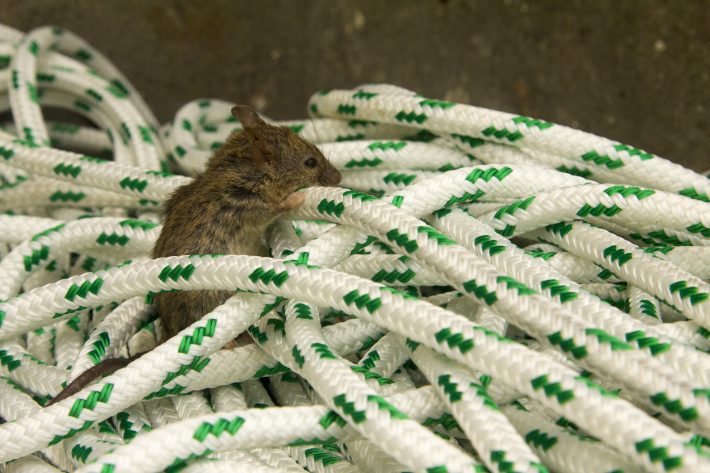Tracking re-invasion of mice on offshore havens
University of Auckland press release
Scientists in New Zealand highlight the importance of biosecurity as a study in Journal of Applied Ecology shows how easily pests can reinvade islands.

The new study, from the University of Auckland in collaboration with the Department of Conservation, investigated mouse invasions of islands across the Abel Tasman and Marlborough region. The project, led by Dr. Florian Pichlmueller from the University of Auckland, combined traditional population genetic methods with new visualisation tools to identify invasion pathways.
This information is critical to safeguarding vulnerable species on islands which often serve as wildlife sanctuaries, the researchers say. Mouse samples were obtained from islands that had undergone multiple invasions, followed by eradications, in recent years.
The visualisation tools, or ‘GenePlots’, created at the University of Auckland, display genetic population profiles through a series of pictures so that conservation managers can see at a glance key patterns of connections or separations between mice on different islands.
The results showed that islands that had been recently invaded and reinvaded in the last ten years all had genetic profiles similar to those on the adjacent mainland, suggesting that stronger biosecurity procedures were required to prevent reinvasion by swimming or on boats.
Three island sanctuaries off the coast of the South Island were involved in the study: Te Pākeka/Maud Island, which had been mouse-free, but was invaded in 2013, and Tonga and Motuareronui/Adele Islands which were reinvaded in 2015.
“The genetic results allowed us to unequivocally determine from where and how fast mice invaded these islands, so DOC could rapidly update their biosecurity practices” says Dr Pichlmueller.
The research team, including Associate Professor James Russell also from the University of Auckland showed that Te Pākeka/Maud and Tonga Islands were invaded by perhaps no more than one pregnant female, while on Motuareronui/Adele Island a much larger number of mice invaded in a short period of time.
“Post-eradication assessment is crucial for pest-management and this study improves the evidential framework for diagnosing biosecurity incursions and evaluating how best to carry out our work on offshore islands into the future,” Associate Professor Russell says.
DoC’s principal scientist Dr Elaine Murphy says the project couldn’t have been done without help from community volunteers.
“There was a community effort to catch the mice in surrounding mainland areas that were needed to compare the invading island mice to”, she says.
Te Pākeka/Maud Island is home to many endangered species including the native Maud Island frog making it critical to keep the island pest free of even mice to ensure long-term sustainability for this unique species. The study also reminds the public about the need for ongoing vigilance on private boats and kayaks to prevent mice hitchhiking back to pest-free islands, Dr Pichlmueller says.
The full article, Island invasion and reinvasion: Informing invasive species management with genetic measures of connectivity, is free to read for a limited time in Journal of Applied Ecology.
Citation: , , , , , . Island invasion and reinvasion: Informing invasive species management with genetic measures of connectivity. J Appl Ecol. 2020; 00: 1– 13. https://doi.org/10.1111/1365-2664.13727
Media contact:
Anne Beston (Senior Media Adviser)
Email: a.beston@auckland.ac.nz
Like what we stand for?
Support our mission and help develop the next generation of ecologists by donating to the British Ecological Society.